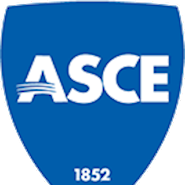
P.V. Vijay, Ph.D., P.E., F.ASCE, a faculty member in the Department of Civil and Environmental Engineering at West Virginia University, has been named a fellow by the ASCE Board of Direction.
Vijay’s teaching, research, and development focus on the highway, waterway, and railway infrastructure built of FRP (fiber-reinforced polymer) composite, concrete, steel, and timber materials. He has served as a principal and co-principal investigator in various research projects related to the design, development, field implementation, rehabilitation, durability, and monitoring of civil engineering infrastructure sponsored by the FHWA, WVDOH, DOE, USACE-DOD, NSF, FRA, and leading industries.
His research includes the development of innovative structures such as large-scale FRP-steel hybrid wicket gates for rivers, FRP recess panels to withstand barge impacts in locks and dams, FRP pavement panels, FRP pedestrian bridges, fire-resistant FRP wall panels, and recycled polymer structural products. He is involved in the rehabilitation of various highway concrete bridges, corroded steel piles, underwater lock and dam discharge ports, and enhancement of pavement properties using recycled tires. He has researched, developed methodologies, and studied the accelerated aging of FRP composites. He has also helped evaluate and repair several century-old masonry and timber buildings including fire-affected historic buildings in Harpers Ferry, West Virginia.
Vijay has mentored and advised many graduate students with master's and doctoral degrees related to advanced FRP composites and traditional construction materials. He has published over 125 technical papers and reports related to the design, use, and field application of FRP composites. He has been instrumental in developing advanced courses on FRP composites and timber design and has co-authored a book titled Reinforced Concrete Design with FRP Composites.
He is the recipient of several national and regional awards for engineering excellence and professional community development activities. He continues to coach the next generation of students and professionals in the use of advanced and traditional materials for construction and rehabilitation of durable and economical civil infrastructure.
He holds master's and doctoral degrees in civil (structures) engineering and is a registered professional engineer.



